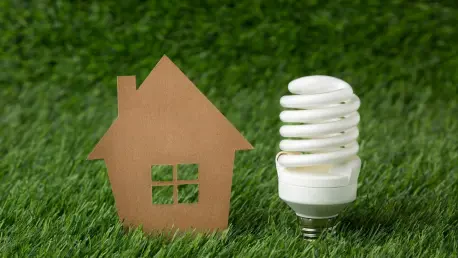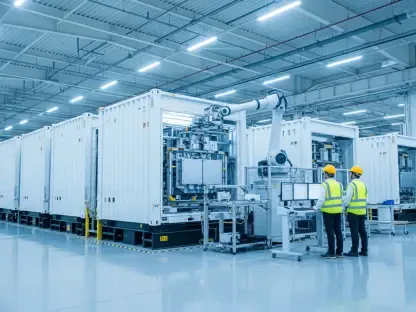In today’s world, with rising energy costs, finding ways to save money and reduce consumption is crucial, especially for landlords and homeowners. Energy-efficient upgrades can make a significant difference, keeping spaces comfortable and pockets fuller. For landlords, maintaining affordable living conditions contributes to tenant satisfaction, reducing incidences of rent arrears. Adaptations that enhance home efficiency can be implemented without straining budgets. The following guide outlines accessible upgrades to cut energy costs, each with practical steps and advice. These tips, inspired by Hillary’s specialists, can help decrease energy bills while ensuring a comfortable living environment.
1. Transition to an Efficient Shower Nozzle
Investing in a high-efficiency shower nozzle can significantly lower household water and energy bills. The typical shower nozzle often uses 12-15 liters of water per minute, which accumulates to approximately 30,000 liters annually for a family of four, equating to filling a small swimming pool. Switching to a low-flow shower nozzle can reduce water consumption, potentially saving an average household between $75 to $125 annually on water expenses. Beyond water savings, switching nozzles can also conserve energy by using less hot water, translating to an additional $60 to $100 in energy savings each year.
Before choosing a new shower nozzle, it’s essential to check if a water-saving model will be advantageous. Start by unscrewing the existing nozzle and placing the hose into a measuring jug. Allow water to flow for one minute and measure the output to determine if more than 9 liters flow per minute. If this is the case, it’s beneficial to consider an upgrade. Opting for a water-efficient model not only reduces household expenses but also supports sustainable living. These nozzles are universally compatible, making installation straightforward and hassle-free, further assisting in rapid implementation and immediate savings.
2. Implement Blackout Curtains or Venetian Blinds for Windows
Blackout curtains or Venetian blinds can be a strategic addition to any home, providing more than just light blocking. They act as effective thermal barriers, regulating indoor temperatures efficiently. During warmer months, blinds can reflect heat away while trapping cooler air indoors, diminishing the dependence on cooling devices such as fans and air conditioning systems. This solution enhances comfort while maintaining lower energy consumption throughout the home, making it particularly suitable for sunlit areas such as bedrooms and living rooms.
The versatility of blackout curtains and Venetian blinds extends to various settings within a home. Bedrooms benefit from the diminished morning sunlight and the overall cooler environment provided by the extra layer of insulation, ensuring comfort and a quality night’s sleep. In living rooms, they enhance privacy and create an optimal ambient atmosphere. Choosing the right material for blackout liners or blinds is critical; options range from thermal woven fabrics to specially designed materials that maximize heat reflection and retention, offering a customized solution to suit specific household needs.
3. Close Up Any Openings Around Letter Slots and Pet Doors
Drafts due to poorly sealed openings can result in significant heat loss, affecting household heating efficiency and increasing costs. Commonly overlooked areas such as letter slots, pet doors, and attic entries often have gaps that contribute to unwanted airflow, raising energy consumption as heating systems struggle to maintain desired temperatures. Filling these gaps with draft-proof tape or sealant is a cost-effective method to boost home energy retention.
To identify and address these gaps, homeowners can employ simple diagnostic techniques, such as using an incense stick or candle near suspected drafts and observing if smoke flickers, indicating airflow leaks. Once detected, applying draft-proof materials ensures minimized heat escape, creating a more consistent indoor atmosphere. This upgrade, while minimal in terms of effort and cost, can considerably decrease heating reliance, ultimately promoting energy efficiency without major alterations or expenses.
4. Set Up Motion Sensors, Timed Outside Lighting, and Low-Energy Bulbs
Outdoor lighting is a common staple for buildings with shared spaces, like stairwells, hallways, lobbies, and gardens. While constant lighting offers a sense of security, it also results in continuous energy consumption. Transitioning to motion-sensor LED lights or solar-powered variants can substantially cut energy use, automatically activating lights only when necessary, ensuring efficiency. These solutions provide both security and convenience, enhancing the safety of shared spaces with reduced energy expenditure.
Integrating energy-saving practices further extends to replacing traditional bulbs with low-energy LEDs. These light sources are longer-lasting and consume far less energy compared to conventional options. Modern LEDs also have a diverse set of designs and color temperatures, enabling customization of indoor areas while benefiting from environmental and financial savings. Opting for solar-powered lighting solutions is another forward-thinking choice, harnessing sunlight to charge during the day and illuminate pathways at night without incurring extra costs.
5. Apply Light-Colored or Reflective Roof Coating
The roof can be a significant contributor to heat accumulation, especially in older homes with darker or traditional roofing styles. A light-colored or reflective roof coating is an effective means of reducing solar heat absorption, lowering the internal temperatures of attics and top floors by as much as 27°F. This change means diminished dependency on cooling systems, leading to lowered electricity bills while improving overall comfort.
Applying reflective coatings is a pragmatic choice, particularly for homes with converted lofts or top-floor apartments susceptible to intense sun exposure. Selecting UV-resistant and weatherproof coatings can ensure durability and long-term benefits, which ultimately make this upgrade a wise and lasting investment. Additionally, these coatings are designed to withstand various weather conditions while enhancing overall aesthetic appeal, ensuring the home’s exterior remains visually pleasing while reaping energy-saving advantages.
6. Insulate the Attic
In the modern landscape where energy costs continue to climb, it’s essential for both landlords and homeowners to discover methods to save money and curtail consumption. Energy-efficient improvements can significantly enhance comfort levels in living spaces while also keeping expenses in check. For landlords, ensuring affordable living conditions is key to tenant contentment, which in turn minimizes the risk of overdue rent. Embracing home efficiency adaptations doesn’t have to break the bank; many upgrades are accessible and cost-effective. These strategies, inspired by Hillary’s specialists, provide practical steps and guidance to effectively lower energy expenditures while maintaining a cozy environment. By implementing these measures, landlords and homeowners can achieve a balance between comfort and financial savings, demonstrating that energy efficiency is a valuable investment both in monetary terms and in enhancing life quality.









